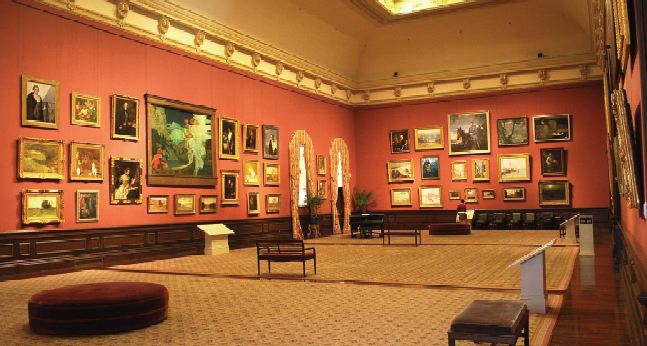Smithsonian installs more LED lamps with 16-month ROI 09 Jul 2012 A DOE Gateway report covering an LED track-lighting retrofit at the Smithsonian American Art Museum has detailed lamp selection, technical challenges, overall savings, and return on investment.
The US Department of Energy (DOE) has published the final evaluation report from a retrofit of track lighting at the Smithsonian American Art Museum in Washington, DC. During the demonstration, LED PAR-30 and MR-16 lamps replaced all traditional incandescent lamps in one gallery and LED PAR-38 and MR-16 lamps partially replaced incandescent lamps in two other galleries.

Key findings from the study include:
The museum was able to achieve very satisfactory visual results in terms of both color and composition with LED lamps, despite some issues with equivalency, beam angles, and compatibility with the museum's low-voltage track heads and dimming control system. The museum's incandescent lamps could not be replaced one-for-one, but the variety of LED lamps available offered new opportunities to tailor the lighting effects for the specific art works. Power use in the gallery completely re-lamped with LEDs decreased from 3.9 to 1.1 W/ft2, reducing electricity costs from $2984 to $816 per year and recovering the higher initial cost of the LEDs in 16 months of operation through energy savings alone. The longer expected life of LEDs considerably reduces spot re-lamping frequency and cost. A 10-year life-cycle cost analysis including maintenance savings, at $0.14/kWh melded electric rate, found a total present value energy savings of $19,041, with a total present value life-cycle cost savings of $27,891. Samples of three LED replacement lamp types used in one gallery were sent for baseline photometric testing and are scheduled for follow-up testing after 4000, 8000, and 12,000 hours of use. The PAR-30 lamps tested at 4000 hours remained very stable in terms of color and moderately stable in terms of light output, but the MR-16 LED lamps exhibited unacceptable change in terms of lumen output and color.





